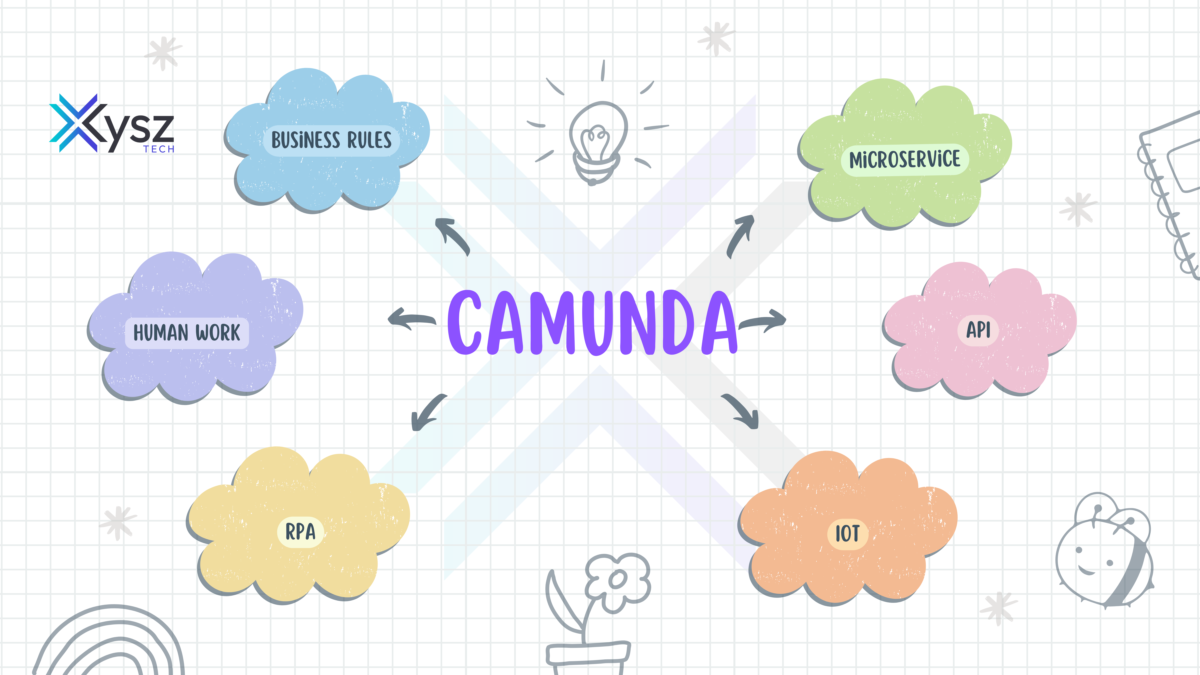Camunda Demystified: From Installation to Modeling Mastery

Camunda Platform is a Java-based framework. The main components are written in java and we have a general focus on providing java developer with the tools they need for designing, implementing and running business processes and workflow on the JVM.Nevertheless, we also want to make the process engine technology available to non-java developers.This is why Camunda Platform also provide a REST API which allows you to build applications connecting to a remote process engine.
Prerequisites:
Before you begin the installation process, make sure you have the following prerequisites:
Java Development Kit (JDK):
Camunda is a java-based application, so you’ll need a compatible JDK (java 8 or later) installed on your system.
Database
Camunda requires a database to store process and task data. Commonly used databases include PostgreSQL, MySQL, and H2 (for testing purposes). Make sure you have one of these databases installed and configured.
Installation Steps:
Download Camunda
Visit this link for Camunda download.
Choose the Camunda version and download the distribution package (usually a ZIP or WAR file).
Extract the Distribution
If you downloaded a zip file , extract it to a directory of your choice.
Database Configuration
You'll need to configure Camunda to use your chosen database. This involves editing the camunda.cfg.xml or application.yml (for Spring Boot) configuration file. Modify the database connection settings to point to your database instance.
Here some sample of JDBC urls
Deploy Camunda Web Application
In your mind you have a question right how to deploy Camunda?
First you can download Camunda modeller
Again you have a question: what is the Camunda Modeler?
The Camunda Modeler is a graphical modelling tool used for creating,editing, and visualising BPMN(Business Process Model and Notation) and DMN (Decision Model and Notation) diagrams. It is specifically designed for working with the Camunda BPM platform, an open-source workflow and decision automation platform used for orchestrating business processes and managing business rules.
Visit this link for Camunda download.
https://camunda.com/download/modeler/
First,Choose which operating system in your machine
After that
Download and unzip
Just unzip the download in a folder of your choice. No additional installation necessary.
Start Camunda Modeler
Run Camunda Modeler.exe (Windows), Camunda Modeler.app (Mac) or camunda-modeler (Linux).
After choosing the version you can use the interface for designing BPMN process diagrams and DMN decision tables.
In this screen users can easily create and edit BPMN and DMN diagrams by dragging and dropping elements onto the canvas, making it accessible for both technical and non-technical users.
In this image you can see the round. It's called the start event.
Double-click on the Start Event. A text box opens. Type “Check the Request”.Click on the start event. From its context menu, select the activity shape (rectangle) and drag it to a good position. Name it Approve Loan. Change the activity type to User Task by clicking on it and using the wrench button.
Select the activity shape (rectangle) and drag it to a good position.name it “check the request”.Change the activity type to “User Task” by clicking on it and using the wrench button.
Add an End Event named Loan Request Processed.
Since we are modelling an executable process, we should give it an ID and set the isExecutable property to true. On the right hand side of the canvas, you find the properties panel. Click on a free spot of the modelling canvas. This displays the properties of the process itself.
First, configure an ID for the process. Type LoanApproval in the property field Id. The property ID is used by the process engine as identifier for the executable process and it is best practice to set it to a human-readable name.
After that, Select the User Task on the canvas. This updates the selection in the properties view. Scroll to the property named Assignee. Type Karan.
When you are done, save your changes by clicking File > Save File As... In the dialogue that pops up, navigate to the loan application project directory (by default this is in your intellijIdea workspace path). In the project directory, place the model in the src/main/resources folder.Return to intellijIdea. Right-click the project folder and click Refresh. This synchronises the new BPMN file with intellijIdea.
Comments (0)
No comments found.